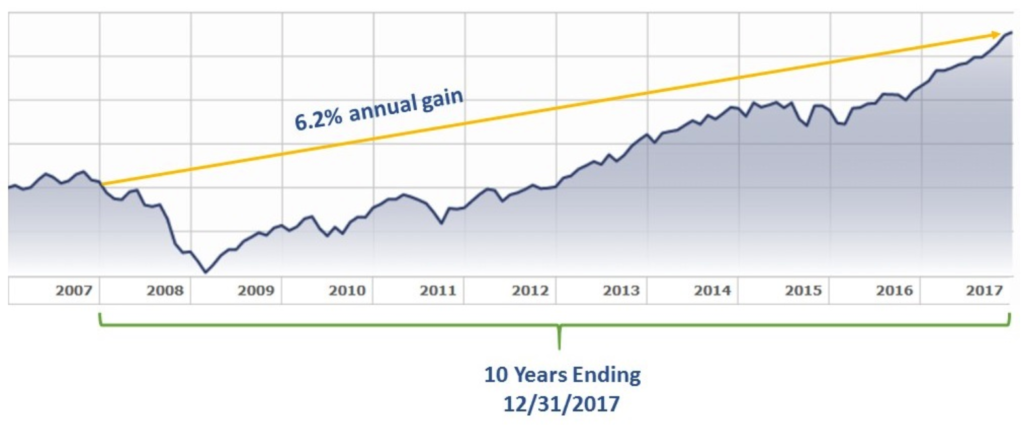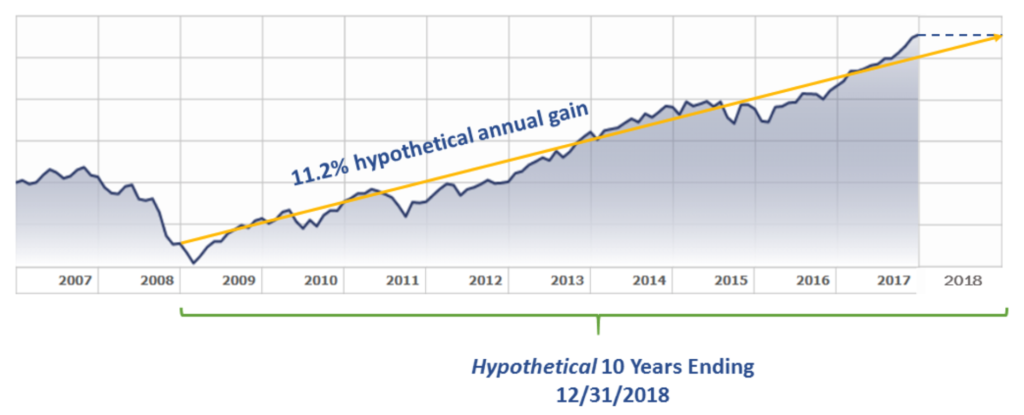One Investment Certainty for 2018

How will the stock market do this year?
This is a question that we’re asked nearly every week. And it’s one we at Sound Stewardship refuse to answer. We won’t give a professional opinion or even a “best guess.” If you’re looking for that kind of thing, just turn on your favorite cable news network. January is Prognostication Season, when every talking TV head can give you their opinion on what the year holds (as they’re paid to do).
If history is your guide, you’d be better off flipping a coin. For evidence, look at one recent headline — Wall Street’s 2017 Market Predictions: Pathetically Wrong. It concludes, “Forecasting is difficult, but this year showed exactly how pointless it can be: Markets performed opposite of virtually all predictions.” Short-term movements in markets are impossible to foretell. As wealth advisors, we focus on long-term strategies over haphazard hypotheses.
However, there is one market certainty that investors can count on in 2018: historical investment performance will dramatically rise this year. This jump in long-term returns would happen even if the stock market remained flat for all of 2018. But if we can’t predict the stock market, how can we predict a rise in performance returns?
Consider this: investment performance is reported in a standard increment of years, usually 1, 3, 5, and 10-year periods. The 10-year period is typically used to describe an investment’s “long-term” performance.
Now, remember where we were 10 years ago. At the close of 2007, the stock market was near its peak. Performance, looking back over the past 10 years, is measuring from 2007’s top to today’s record highs. The S&P 500 Index has grown 6.2% per year over this period, before reinvesting any dividends.

But by the end of 2008, things were not good. Most readers will recall when the market experienced one of the worst drops on record across the second half of that year. By the end of 2018, our 10-year performance periods will measure performance from the depths of the market crash, instead of the 2007 high. In other words, even if the S&P 500 remains flat for the entire year, its 10-year returns will almost double to greater than 11% per year — just by changing the reporting period.

Even if 2018 experiences losses, performance reporting will show improvement based on the dramatic change at the starting date.
There’s nothing devious in these reporting nuances themselves, but investors should beware. If this remarkable bull market continues throughout the year, hype around stocks could become greater as numbers start looking even better. This could easily lead to overly aggressive decision-making, if investors are not cognizant of the underlying reasons the returns look so good.
It’s also a good reminder to pay attention to dates when comparing investments. Just by misreading the reporting periods, an investor looking at a statement a few months old could easily be comparing apples to oranges and come to incorrect conclusions about the underlying investments.
If you were hoping for a prediction that would give you specific investing directions, I’m sorry I can’t provide it here. But if there’s one thing we can learn from this investment reporting certainty, it’s this: the devil is in the details. It’s always wise to examine the fine print, and take the predictions from TV’s talking heads with a grain of salt. Not only is past performance no guarantee of future results; if not understood correctly, past performance itself can be misconstrued.
When it comes to market predictions, it’s wise to be skeptical and instead, apply time-tested principles. Remain focused on your long-term goals for long-term success.
< Back to Insights

